Stop Fighting the Shade: 5 Shrubs That Actually Thrive in Dark Corners
I’ve walked onto so many properties where the owners just sigh and point to a dark, sad-looking corner. You know the spot—the one under that giant maple tree or along the north-facing wall of the house. They see a problem, but honestly, I see pure potential. Some of the most stunning, peaceful gardens are born in the shade. It’s not a curse, it’s just a different game with a different set of rules.
In this article
So many people get stuck on the idea that every plant needs hours of bright sun. That’s just not how nature works! Think about a forest floor. It’s a whole ecosystem thriving under a leafy canopy. Our job is to mimic that, choosing plants that are already built for low-light living. Trust me, it saves a ton of time, water, and heartache.
First Things First: Know Your Shade
Before you even think about heading to the nursery, you have to figure out what kind of shade you’re dealing with. This is the single most important step, and skipping it is where most people go wrong. Generally, shade breaks down into a few key types:
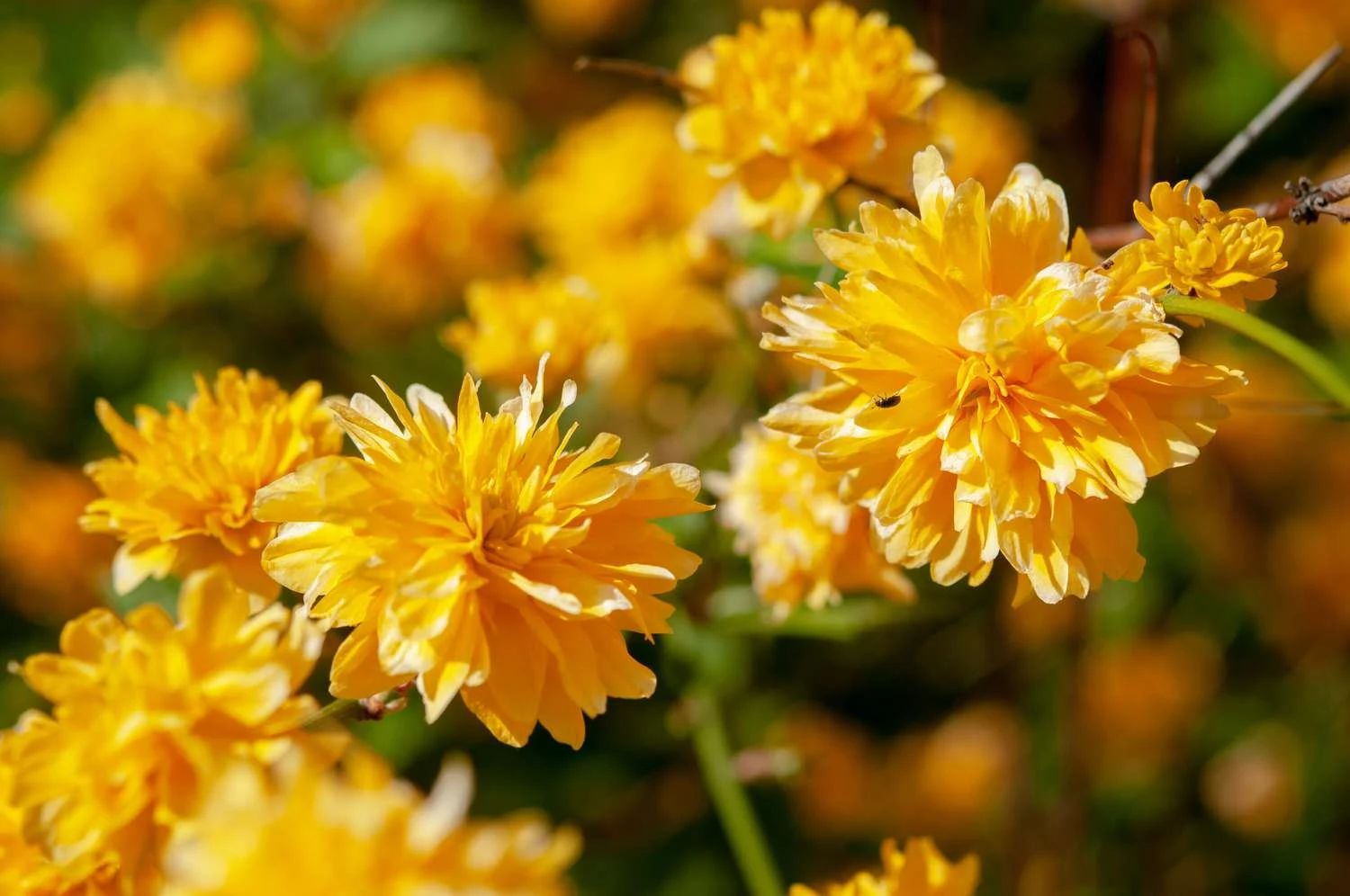
- Full Shade: This is the tough one. We’re talking less than three hours of direct sun a day, often under dense evergreens or on the north side of a building.
- Partial Shade: The sweet spot for many plants. This area gets between three and six hours of sun, usually in the morning or late afternoon. Morning sun is way gentler, so if you have that, you’ve hit the jackpot.
- Dappled Shade: My personal favorite. This is that beautiful, filtered light you find under a leafy deciduous tree. The pattern of sun and shade moves all day, and woodland plants absolutely love it.
- Dry Shade: This is more of a condition than a light level. It’s shady, but the soil is also bone-dry because huge tree roots are hogging all the moisture. This calls for some seriously tough plants.
Your mission, should you choose to accept it: Grab a notepad and check your shady spot three times tomorrow—say, 9 a.m., 1 p.m., and 4 p.m. Jot down where the sun hits and for how long. This ten-minute task will literally save you from buying (and killing) the wrong plant.
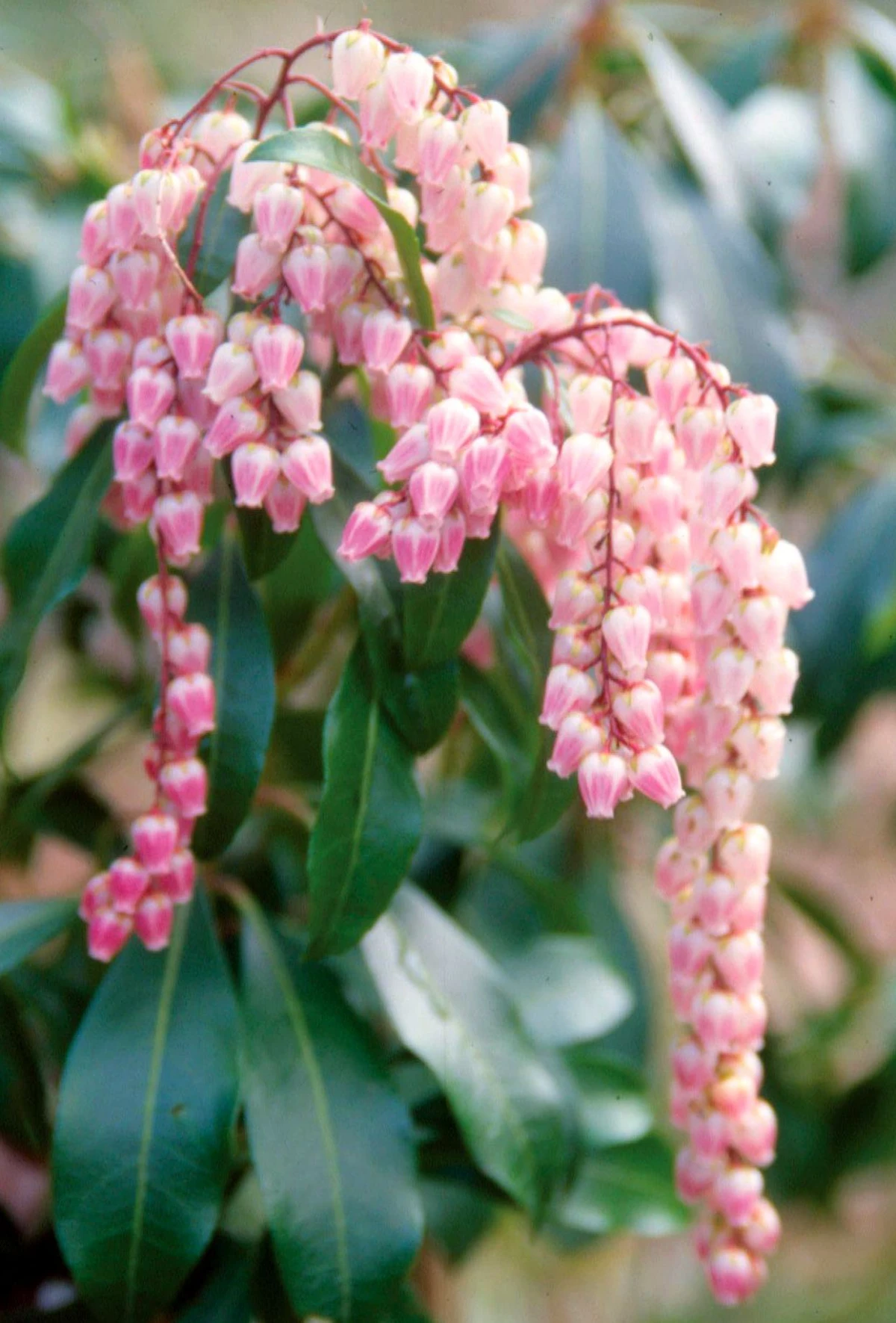
The Foundation: Get Your Soil Right
Great shade gardens start with great soil. Out in the woods, fallen leaves create a rich, spongy, slightly acidic layer that’s packed with nutrients. That’s the gold standard we’re aiming for. Unfortunately, the soil in that shady corner of your yard is probably compacted and nutrient-starved.
Before planting, you’ve got to amend it. My go-to recipe is mixing the existing soil with high-quality compost and finely shredded pine bark. The compost adds nutrients and helps hold water, while the pine bark improves drainage and nudges the soil pH a bit lower, which most shade-lovers prefer. Dig down and mix this in about 8 to 12 inches deep.
Oh yeah, a quick shopping list for this part is pretty simple. It’s a small investment for a massive payoff:
- 1 large bag of compost (usually $10-$20)
- 1 bag of pine bark fines or soil conditioner ($8-$15)
- A basic soil test kit (around $15-$25 from any garden center)
That soil test will tell you your pH. Many of the best shade shrubs, like Rhododendrons, need acidic soil to thrive. If your soil is too alkaline, you’ll need to add a soil acidifier. Just follow the directions on the package. Heads up: this isn’t a one-and-done fix. You’ll want to top-dress the area with a fresh layer of compost every year to keep things in good shape.
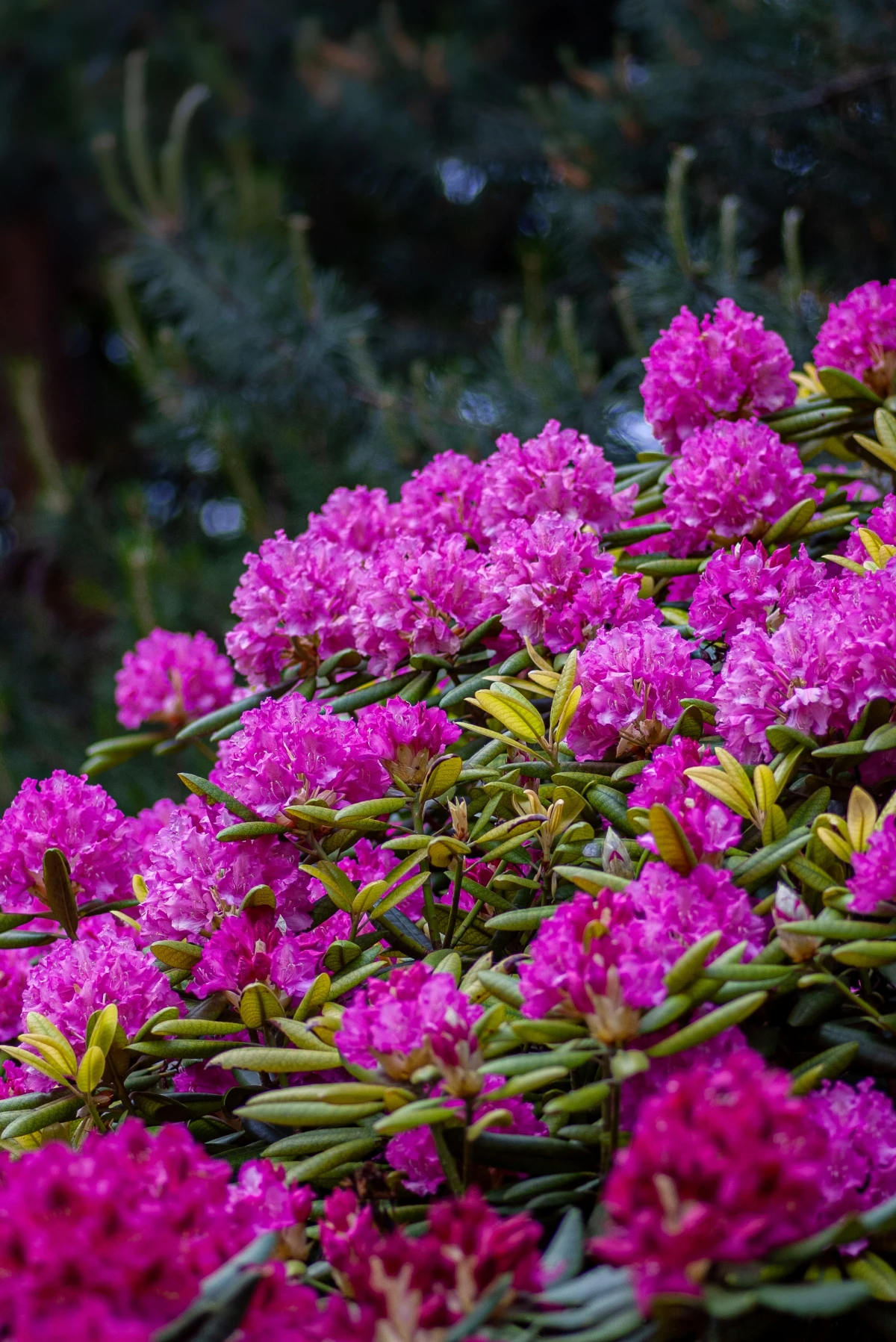
A Pro’s Top 5 Shrubs for Shady Spots
Over the years, I’ve developed a list of rock-solid shrubs that I can count on to perform. They bring flowers, awesome foliage, and much-needed structure to those darker areas. The real secret is matching the right plant to the right conditions.
1. Rhododendrons & Azaleas
These are the undisputed royalty of the shade garden. They offer spectacular spring flowers and, in the case of most rhododendrons, great evergreen foliage. I love using the big-leaved rhodies for structure and the smaller-leaved azaleas for pops of vibrant color in front of them.
Light & Soil: They need that dappled or partial shade. Hot afternoon sun is a dealbreaker—it will scorch their leaves. And they are NOT kidding about needing acidic, well-drained soil. Their roots are shallow and will rot in a heartbeat if they sit in water. A common mistake is planting them in a small amended hole in heavy clay; it just turns into a bathtub and drowns the plant.
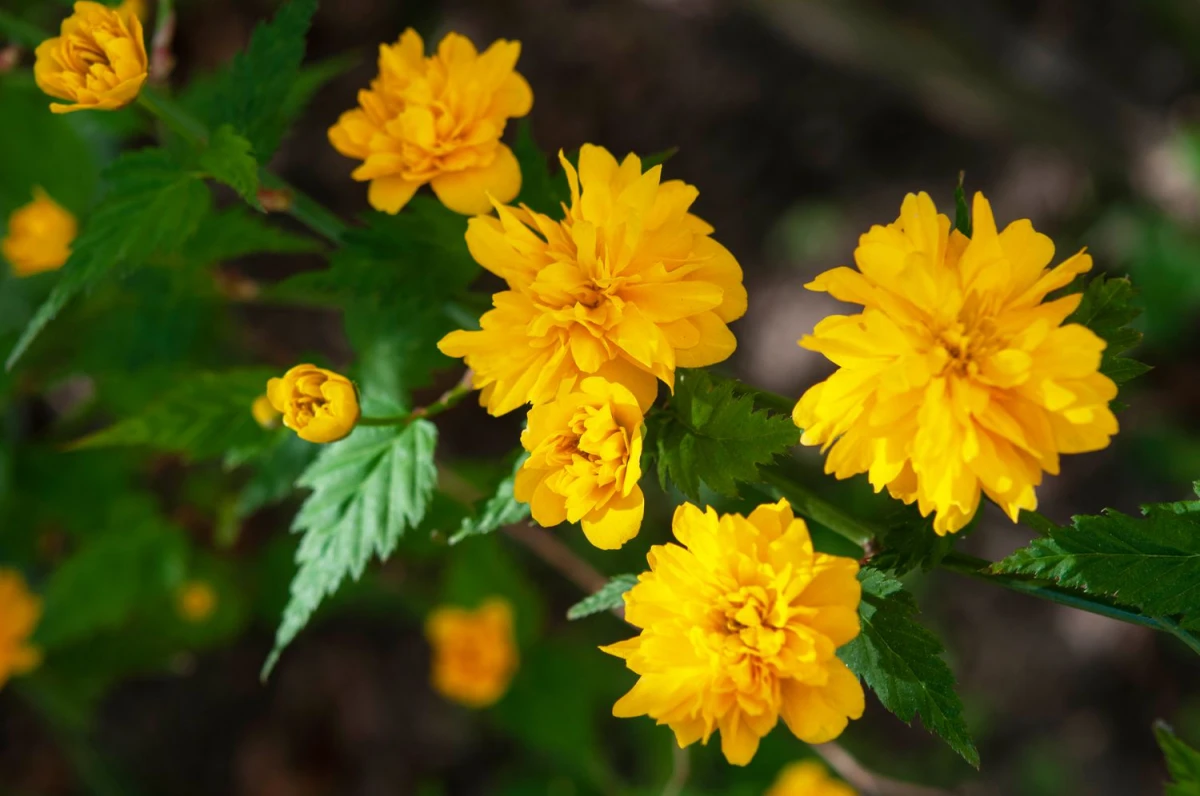
Planting Tip: Always plant them a little high. The top of the root ball should be slightly above the surrounding soil. This is a game-changer for drainage.
Pruning 101: Prune them right after they finish flowering. If you wait, you’ll cut off next year’s flower buds, which form over the summer. Seriously, set a calendar reminder!
Goes Great With: Hostas, ferns, and coral bells (Heuchera). The bold leaves of the hostas are a perfect contrast to the finer texture of the azaleas.
Good to Know: Expect to pay between $30 and $60 for a decent-sized plant, though rare varieties can cost more. Also, be aware that all parts of these plants are toxic if eaten, so be careful with pets and curious kids.
2. Japanese Pieris
This is my secret weapon for year-round interest. It’s an evergreen with beautiful, cascading bell-shaped flowers in early spring. The best part? The new leaves on many varieties come in shades of fiery red or bronze. It’s a showstopper.
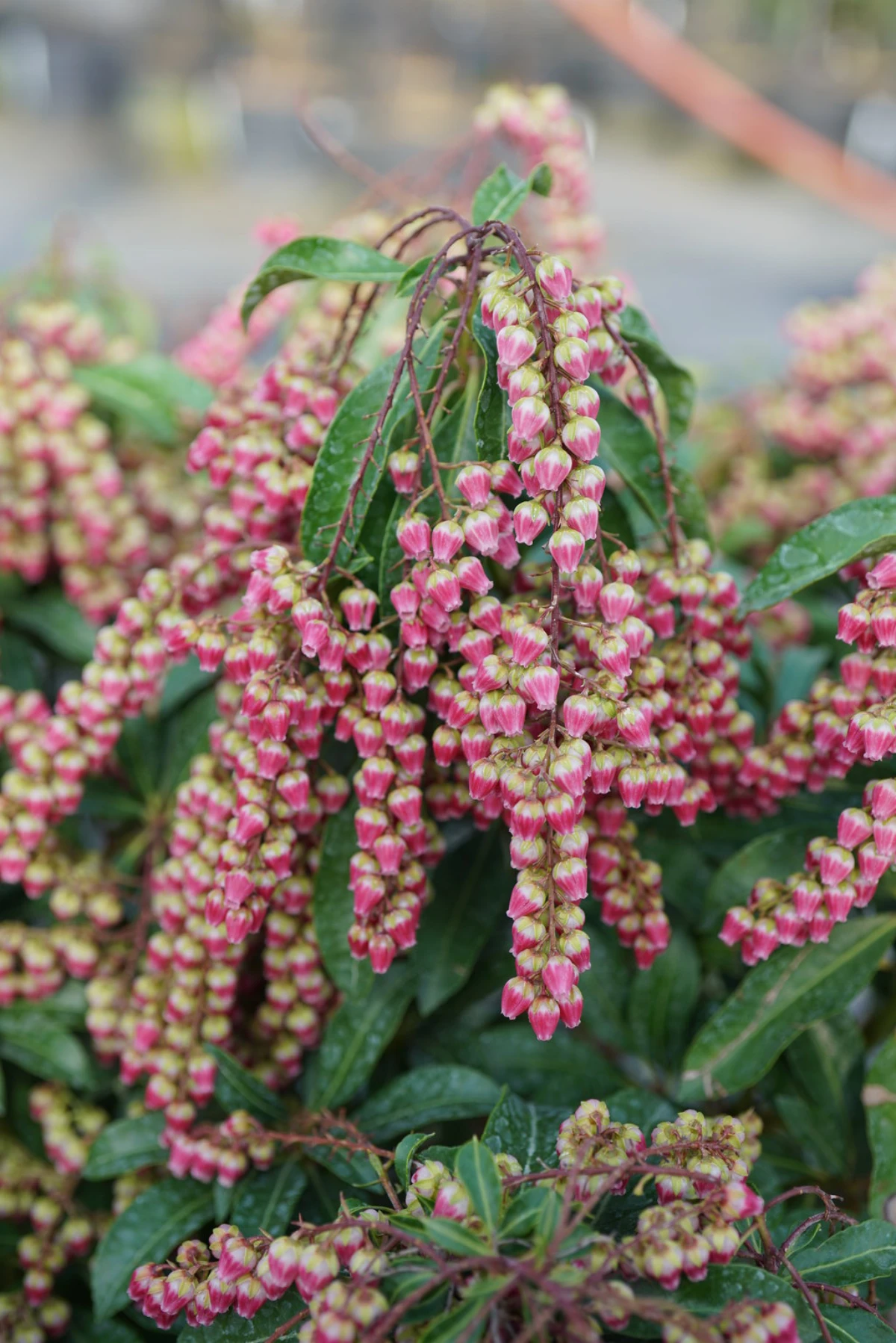
Light & Soil: Prefers partial shade, especially protection from harsh winter winds. And just like its rhododendron cousins, it demands that acidic, well-drained soil.
Pro Tip: From my experience, Pieris does best when shielded from the worst of winter. Planting it on the east side of your house gives it gentle morning sun and protects it from brutal winds.
Pruning 101: Super low-maintenance. Just snip off the dead flower clusters after they fade to keep the plant looking tidy.
Goes Great With: Black mondo grass for a dramatic color contrast, or with shorter, blue-toned hostas like ‘Halcyon’.
Good to Know: This is another one that’s toxic if ingested, so plant it thoughtfully.
3. Oakleaf Hydrangea
When a client wants a single plant that does it all, this is often my top pick. It has huge, oak-shaped leaves, big cones of white summer flowers that age to a lovely dusty pink, incredible reddish-purple fall color, and peeling cinnamon-colored bark for winter interest. It’s a four-season superstar.
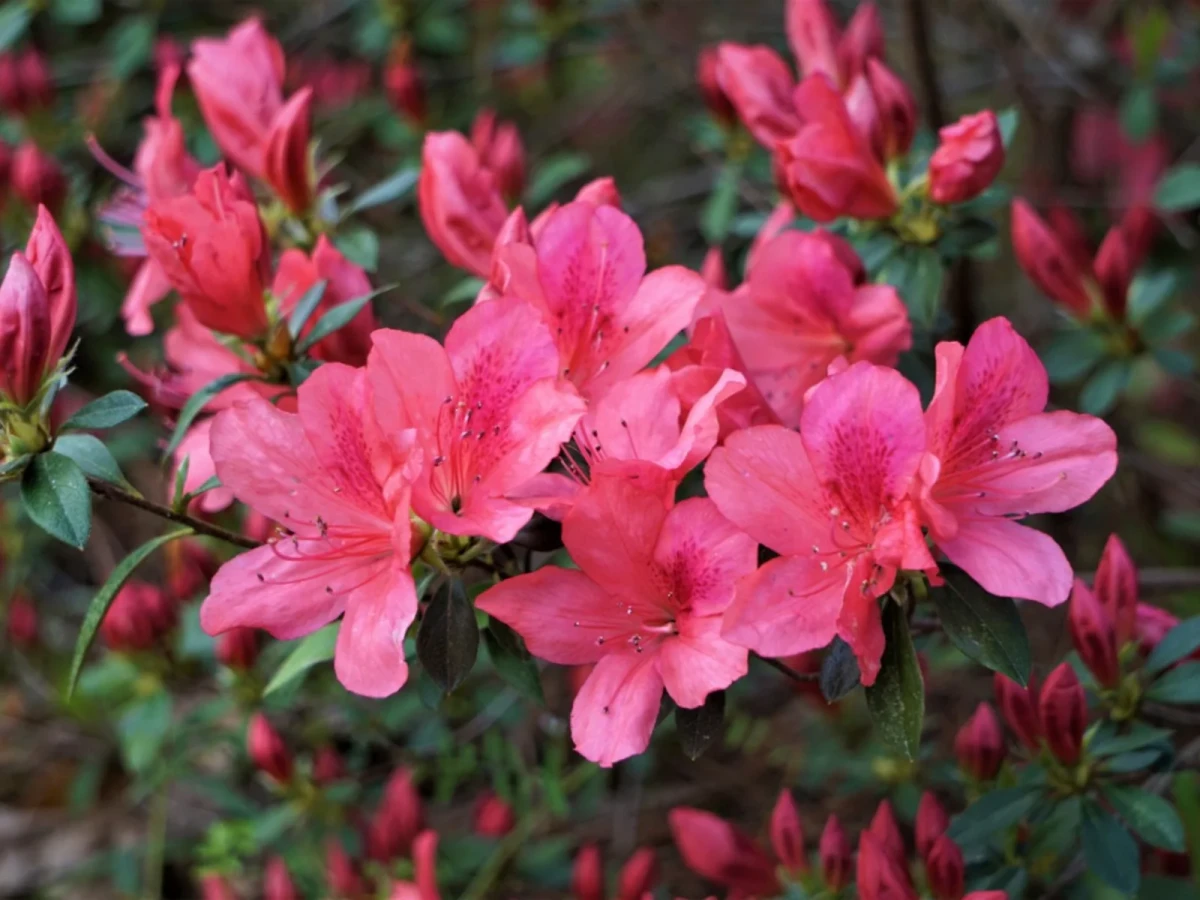
Light & Soil: This is one of the best choices for that dreaded dry shade, once it’s established. It can take a bit more sun than other hydrangeas but is perfectly happy in partial shade. It’s also not fussy about soil pH.
Planting Tip: The key to success in dry shade is watering consistently for the first year or two. Water deeply once a week during dry spells instead of a light sprinkle every day.
Pruning 101: This one blooms on “old wood”—the branches that grew last year. So, if you need to prune it, do it right after it finishes flowering in the summer. If you prune it in the spring, you’re literally cutting off all the flowers!
Goes Great With: I love massing these on a slope or placing them in front of a dark Yew hedge. At their feet, plant Christmas ferns and Lenten roses (Hellebores). The texture combination is incredible.
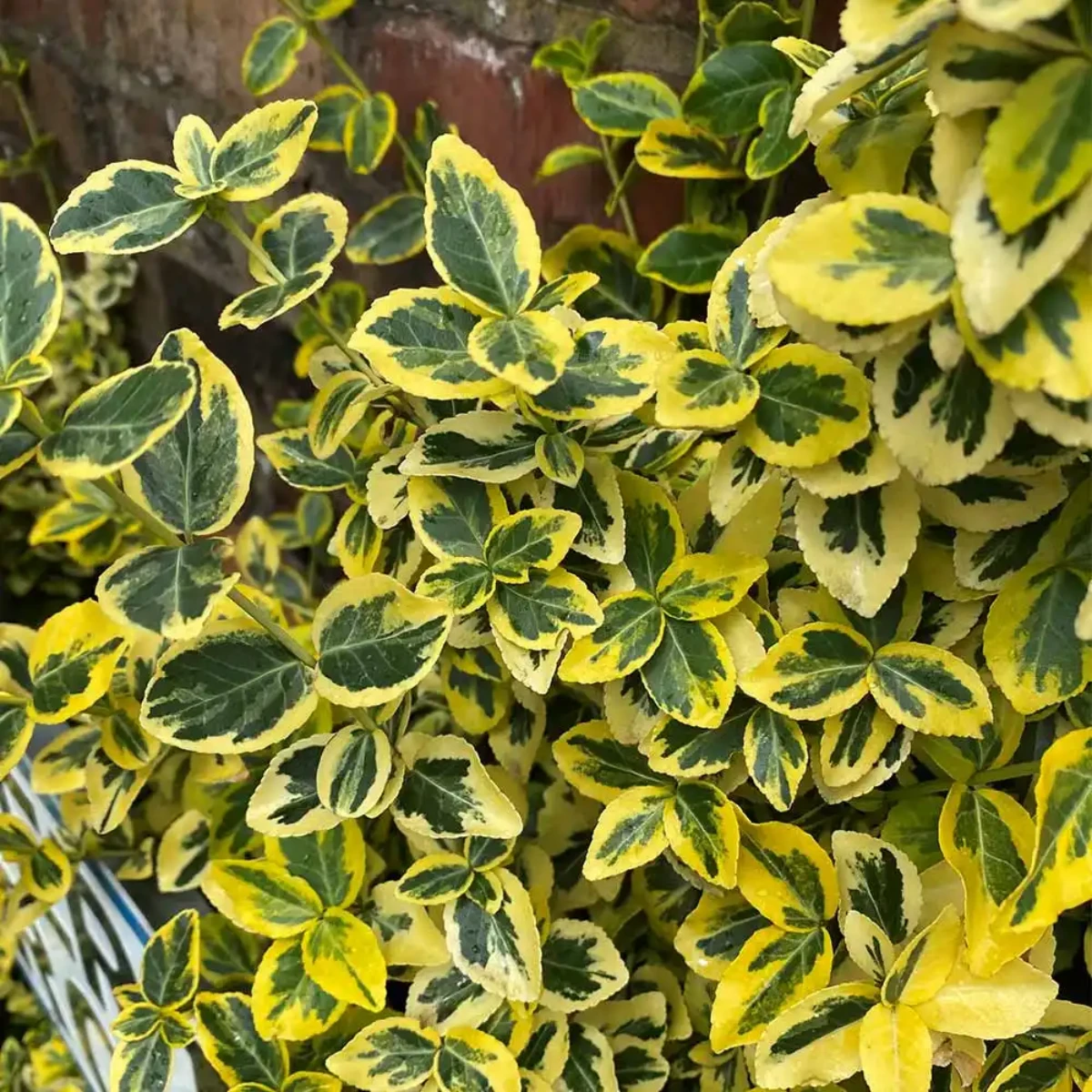
4. Japanese Kerria
Got a really dark spot where you’ve given up hope? Try Kerria. This shrub is a problem-solver, known for its cheerful, yellow, rose-like flowers in spring. But its best feature might be its bright green stems, which look amazing against snow in the winter.
Light & Soil: It’s one of the most shade-tolerant shrubs out there and is adaptable to most soils as long as they aren’t soggy.
Heads up! This plant spreads by sending out suckers from its roots. This can be great for filling in a tough spot, but it can be a bit of a bully in a tidy garden bed. You’ll need to snip out the new shoots each spring to keep it in check.
Pruning 101: After it flowers, cut a few of the oldest, thickest canes down to the ground. This encourages fresh new green stems and keeps the plant vigorous.
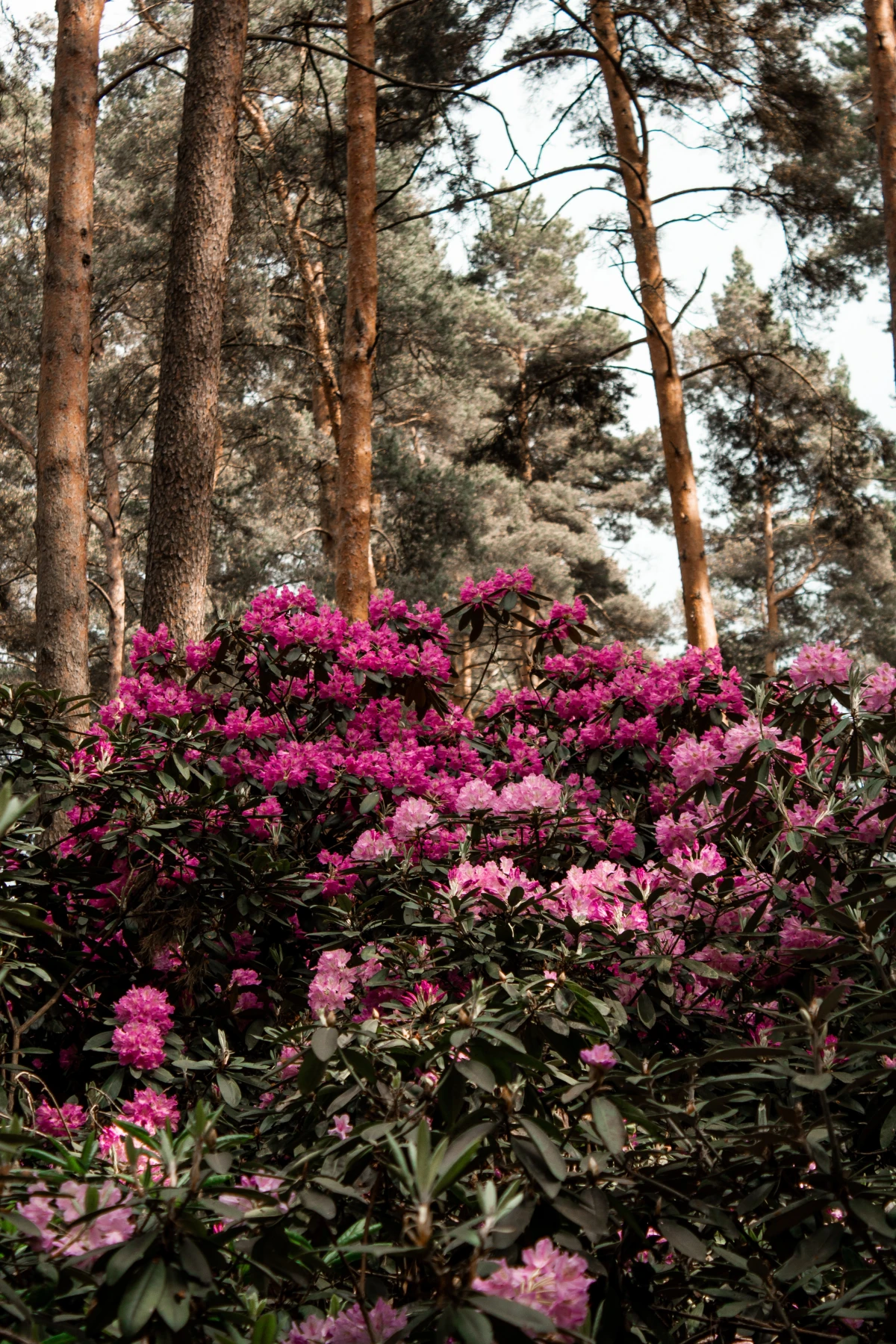
Goes Great With: The arching green stems look fantastic weaving through larger, dark-leaved perennials like Ligularia or behind a carpet of sweet woodruff.
Budget-Friendly: Kerria is often a bargain, sometimes available for under $25 for a decent plant because it grows so easily.
5. Yew
When you just need a solid, dark green, evergreen background, nothing beats a Yew. They are the workhorses of the shade garden. You can shear them into a formal hedge or let them grow into a more natural, soft shape. They’re incredibly dependable.
Light & Soil: Yews are champs in deep shade. Their one non-negotiable demand? Excellent drainage. I’ve seen more Yews killed by wet soil than anything else. Their roots will rot if they sit in water, period.
Planting Tip: If your soil isn’t sandy, mix some grit or fine gravel into the planting hole along with your compost. And just like with rhododendrons, plant them a tad high.
Pruning 101: You can prune Yews pretty much anytime except for late fall. They’re so tough you can even cut them back really hard if an old hedge has gotten overgrown, and they’ll bounce back.
Goes Great With: Everything! They make a perfect, dark backdrop that makes everything in front of them pop, from the white flowers of an Oakleaf Hydrangea to the bright foliage of a golden Japanese forest grass.
CRITICAL WARNING: With the exception of the fleshy red fruit part, all parts of a Yew—especially the seed inside the fruit—are extremely poisonous. Never, ever plant them where children or pets might be tempted to nibble. Be smart about placement.
A Quick Win for Today
Feeling overwhelmed? Don’t be. If you don’t have time for a big project, just do this one thing: go buy one bag of leaf mold or compost and spread a 1 to 2-inch layer under your big trees. You’ve just started improving your soil without even picking up a shovel. Easy, right?
Finally, When to Call a Pro
While you can absolutely tackle this yourself, there are a couple of times it pays to call for backup. If your shade is from a huge, valuable tree, talk to a certified arborist before you start digging around its roots. And if you’re planning a major overhaul, a landscape designer can help you pull all the pieces together into a beautiful, cohesive plan.
Ultimately, gardening in the shade is incredibly rewarding. It forces you to slow down and appreciate the subtle beauty of different leaf shapes, textures, and forms. With the right plants, that dark corner can become the most magical part of your entire yard.
Inspirational Gallery
Beyond the shrub, think in layers. A successful shade garden mimics a forest floor. Once your shrubs are established, weave in perennials that offer contrasting textures and colors. The bold, architectural leaves of a Hosta ‘Sum and Substance’, the silvery fronds of a Japanese Painted Fern (Athyrium niponicum ‘Pictum’), and the delicate flowers of Bleeding Hearts (Dicentra spectabilis) create a rich, multi-dimensional tapestry.
A single large, mature tree can create an area of shade equivalent to the footprint of a small house, but it also creates a unique microclimate that can support dozens of specialized plant species.
My shade garden feels so… flat. How do I add dimension?
Look beyond flowers and focus on form and foliage. Contrast the large, rounded leaves of a Hydrangea with the fine, airy texture of an Astilbe. Introduce verticality with the tall, elegant spires of a Goat’s Beard (Aruncus dioicus). Playing with these different shapes and textures adds depth and year-round interest, even when nothing is in bloom.
The right mulch makes all the difference, especially in challenging dry shade.
Leaf Mold: A gardener’s gold. It’s free, mimics the natural forest floor, and dramatically improves soil structure and moisture retention as it breaks down.
Pine Fines or Shredded Bark: Offers a neater, more uniform look and is slower to decompose. It’s excellent for suppressing weeds but doesn’t provide as many nutrients to the soil over time.
For maximum benefit, consider a layer of leaf mold with a decorative topping of bark.
- Creates a cool, damp micro-habitat.
- Provides a naturalistic, aged look.
- Supports beneficial insects and mosses.
The secret? A stumpery. This Victorian concept is back in style. Simply arrange a few interesting old logs or tree stumps in a corner. The decaying wood becomes a perfect planting pocket for ferns, hostas, and creeping groundcovers, turning a problem spot into a stunning, living sculpture.
A critical tip for dry shade: Water deeply, but less frequently. The dense canopy of a mature tree can actually block a lot of summer rain, a phenomenon known as ‘rain shadow’. A light surface sprinkling will never reach the roots. Instead, use a soaker hose or a drip irrigation system snaked around your shrubs and let it run for a long time once a week. This encourages deep, resilient root growth.
Don’t just fight the darkness, embrace the mood it creates. A shade garden offers a unique sensory experience: the air feels cooler, sounds are dampened, and the focus shifts from bright, boisterous colors to the subtle beauty of texture, form, and filtered light. It’s a natural invitation to create a peaceful retreat—a place for a quiet bench and a moment of calm contemplation.
Fact: Plants in deep shade can photosynthesize using far-red light, a wavelength largely filtered out by the upper canopy leaves. This is why many true shade-dwellers have very dark green, almost black, foliage—they are packed with chlorophyll to capture every last available photon of light.
This adaptation is why plants like the Japanese Plum Yew (Cephalotaxus harringtonia) or certain Hellebores can maintain such a rich, deep color even in what seems like perpetual twilight. They are built for low-light efficiency.
When planting under a large, established tree like a maple or beech, you’re competing with a massive root system. Instead of fighting it, work with it. Try planting smaller, younger shrubs (in 1-gallon pots) which are easier to tuck between major roots. They will adapt more quickly than a large, root-bound specimen and ultimately establish themselves with greater success.










